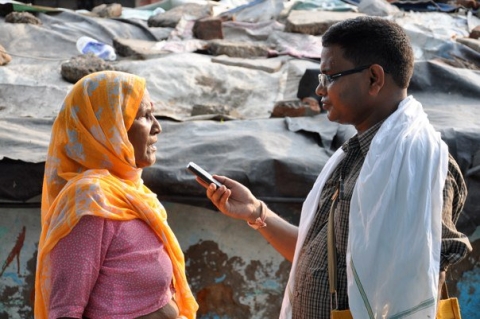
A citizen journalist uses his cellphone to interview a woman in Central India as part of a training workshop on mobile news. (Photo by Arjun Venkatraman)
Citizen journalists in remote regions of India are using cell phones to call in news stories that can be relayed to a whole network of tribal people through CGnet Swara, the mobile news network created by Knight International Journalism Fellow Shubhranshu Choudhary. In an interview with Technoholik.com, a technical advisor for CGnet says the network receives more than 200 calls a day. Technoholik says the hyperlocal network is really a form of podcasting.